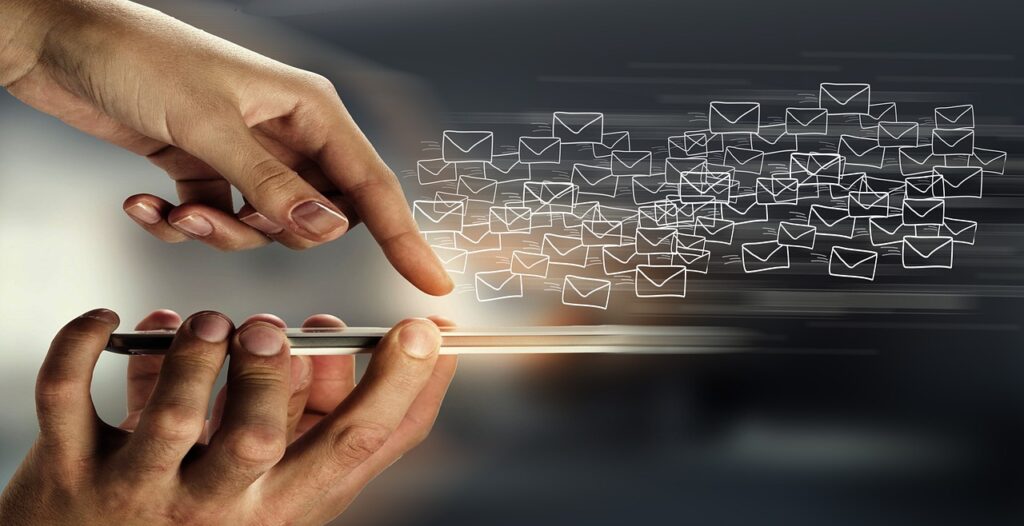Email copy refers to the written content of an email message, including the subject line, opening, body, and call to action. Effective email copy is crucial for businesses and organizations that rely on email marketing to communicate with their audience. In this article, we’ll provide tips and best practices to write effective email copy that converts and resonates with your audience.
Know Your Audience
- Researching your audience: Before you write effective email copy, it’s important to understand your audience. Who are they? What are their needs and interests? What challenges do they face? Researching your audience can help you create more targeted and personalized content that speaks directly to their needs.
- Segmenting your email list: Segmenting your email list based on different criteria (such as demographics, interests, or behavior) can help you send more relevant and targeted messages to your subscribers.
- Personalizing your emails: Adding personalization elements (such as the recipient’s name, location, or past purchases) can help make your emails feel more personalized and engaging.
Crafting the Message
- Choosing a clear and concise subject line: Your subject line is the first thing your recipients will see, so it’s important to choose a clear and concise headline that captures their attention and entices them to open your email.
- Writing a compelling opening: Your opening should grab your reader’s attention and establish a connection with them. Consider using a personalized greeting or asking a question to pique their interest.
- Structuring the body of the email: The body of your email should be structured in a clear and organized way, with short paragraphs and bullet points to make it scannable. Make sure to highlight the benefits of your offer or message, and use persuasive language to encourage your readers to take action.
- Ending with a strong call to action: Your call to action (CTA) is the most important part of your email copy. Make sure to use clear and direct language to tell your readers what you want them to do (such as “click here to learn more” or “buy now”). Use a sense of urgency to encourage them to act quickly.
Tone and Language
- Choosing the right tone for your audience and purpose: The tone of your email should match the expectations and preferences of your audience, as well as the purpose of your message. For example, a promotional email might use a more sales-oriented tone, while a newsletter might use a more conversational tone.
- Avoiding jargon and technical language: Using jargon or technical language can make your email copy confusing or unappealing to your audience. Instead, use clear and simple language that is easy to understand.
- Using active voice and strong verbs: Using active voice and strong verbs can make your email copy more engaging and persuasive. For example, instead of saying “the product can be purchased on our website”, say “buy the product on our website”.
Formatting and Design
- Keeping it simple and scannable: Your email should be easy to read and navigate. Use a simple and clean design, with a clear hierarchy of information and visual elements that support the message.
- Using images and visuals effectively: Including images or visuals in your email can make it more visually appealing and engaging. Make sure to choose high-quality and relevant images, and optimize their size and format for fast loading.
- Optimizing for mobile devices: With more people reading emails on their mobile devices, it’s important to optimize your email for mobile viewing. Use a responsive design that adapts to different screen sizes, and make sure to test your email on different devices and email clients.
Testing and Analytics
- A/B testing your email copy: A/B testing (also known as split testing) involves sending two versions of your email to a small sample of your audience, and comparing their performance to determine which version is more effective. Use A/B testing to test different elements of your email copy (such as subject lines, CTAs, or offers) to improve your results.
- Measuring and analyzing the effectiveness of your emails: Use email analytics tools (such as Google Analytics or Mailchimp) to track and measure the performance of your emails. Look at metrics such as open rates, click-through rates, and conversions to identify areas for improvement.
- Making adjustments and improvements based on data: Use the insights from your A/B testing and analytics to make adjustments and improvements to your email copy over time. Continuously refining and optimizing your email copy can help you achieve better results and drive more conversions.
Conclusion
In summary, it requires a combination of research to write effective email copy, writing skills, and design knowledge. By understanding your audience, crafting a compelling message, using the right tone and language, formatting your email effectively, and testing and analyzing your results, you can create email copy that resonates with your audience and drives results for your business. Keep these tips in mind as you create your next email campaign, and remember to always be testing and refining your approach.


